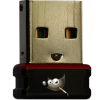| Welcome, Guest |
You have to register before you can post on our site.
|
| Forum Statistics |
» Members: 5,046
» Latest member: fritscho
» Forum threads: 7,768
» Forum posts: 42,190
Full Statistics
|
|
|
| gimp-image-insert-layer: Item 'Background' (2) has already been added to an image |
|
Posted by: Skippy - 01-12-2019, 11:08 PM - Forum: Scripting questions
- Replies (4)
|
 |
Hi,
I am trying to write a script which would insert an image as a layer within layers of another image. Here is what I got so far :
Code:
(define (foobar filename)
(let* (
; open image to add
(inputfile (car (gimp-file-load RUN-NONINTERACTIVE filename filename)))
(picture (car (gimp-image-get-active-layer inputfile)))
; open file to insert image into
(template (car (gimp-file-load RUN-NONINTERACTIVE "template.xcf" "template.xcf")))
)
; add picture to template
(gimp-image-insert-layer template picture 0 -1)
; flatten image
(gimp-image-flatten template)
; couldn't get this line to work outside the next one, probably have to investigate "let" syntax
; (drawable (car (gimp-image-get-active-drawable template)))
(file-jpeg-save RUN-NONINTERACTIVE template (car (gimp-image-get-active-drawable template)) "outfile.jpg" "outfile.jpg" 0.95 0.95 1 1 "" 2 1 0 2)
)
)
I call the script with gimp -i -b '(foobar "picture.jpg")' -b '(gimp-quit 0)'.
However it fails on gimp-image-insert-layer :
Quote:GIMP-Error: Calling error for procedure 'gimp-image-insert-layer':
Item 'Background' (2) has already been added to an image
batch command experienced an execution error:
Error: ( : 1) Procedure execution of gimp-image-insert-layer failed on invalid input arguments: Item 'Background' (2) has already been added to an image
I am struggling to understand this, the only results I get are two old threads on GF.c from which the useful replies have been removed…
What's wrong with my script ?
|

|
|
| ofn-layer-tiles |
|
Posted by: Ofnuts - 01-12-2019, 09:32 PM - Forum: Extending the GIMP
- Replies (3)
|
 |
New baby. Its purpose is to make it easy to coalesce many layers into a single image (for instance, to simultaneously edit the colors of all frames in an animation) or to split a single layer into many tiles (for instance to restore the animation).
As a side effect, it can also be used to arrange layers of identical size in a gird.
ofn-layer-tiles is here.
As usual, the ZIP contains an HTML doc.
|

|
|
| How do I create a printable grid with scanned images in each sqaure? |
|
Posted by: SamosSage - 01-11-2019, 02:51 PM - Forum: General questions
- Replies (3)
|
 |
Hello everyone!
This is my first post, so bear with me if the formatting is a little wonky. 
I am starting a project where I take small images and quotes and cut them into squares on an 8.5x11.00in cardstock. What I would like to do, but am not sure how to do, is to divide a layer in gimp into a grid, with boxes ~4x5 on the paper. Then, I would like to paste the scanned images I have into each of those squares, export, and print.
Using render>pattern has gotten me to a certain point, but it's not very printer friendly, the alignment seems kinda off, and I feel like I am reinventing the wheel. What would be perfect is if each square was its own instance, as in a separate layer so I can work within each box separately without grabbing other places as well; I am not sure if that's possible or over-complicated?
I am not totally new to GIMP, although I haven't used it in about 2 years.
|

|
|
| Suddenly copy changes brush |
|
Posted by: marty39 - 01-11-2019, 01:42 PM - Forum: Older Gimp versions (2.8, 2.6....)
- Replies (1)
|
 |
I've been using Gimp 2.8.14p2 (January 9, 2015) for at least the last three months on a Mac running El Capitan. A few weeks ago it started doing something new, though I gather it's what's supposed to happen.
Until a week or so ago, I could copy and paste without changing the brush in any of the tool options. Now when I copy and paste something I have to change the brush from "clipboard" back to the circular shape I had before.
When I copy something from an image, I want to paste it, not change the brush. I want to keep the brush I had.
What changed, and how can I change it back?
|

|
|
| Display Size vs Pixel Size Problems |
|
Posted by: blinkinhek - 01-10-2019, 06:12 PM - Forum: General questions
- Replies (4)
|
 |
I have recently moved to a Surface Pro. with it's fairly high res screen BUT the icons are not really legible or usable I can adjust some in settings BUT the Tool options dialog do not change. Windows does provide a scaling factor in its settings, which helps some programs (many of which automatically scale their icons, menus, etc) but GIMP seems to ignore it.
Can anyone help?
TIA
|

|
|
| How to get image colors closter together? |
|
Posted by: Acoustic - 01-10-2019, 05:36 AM - Forum: General questions
- Replies (3)
|
 |
To preface, I am colorblind. So many colors blend together for me, so I need some assistance on this. Working on a terrain and I have 2 different sets of textures, one far away and one close. They both need to be really similar in color. I created a palette from one and applied it to the other, but I am not sure if they are still close enough. If someone could get them closer (or tell me that they are as close as they'll get, as I am not sure) and tell me what steps you took, so I can replicate on the other textures. Or any general advice, as well. Thanks.
https://imgur.com/a/l3Xq2co
Two images as example.
|

|
|
|